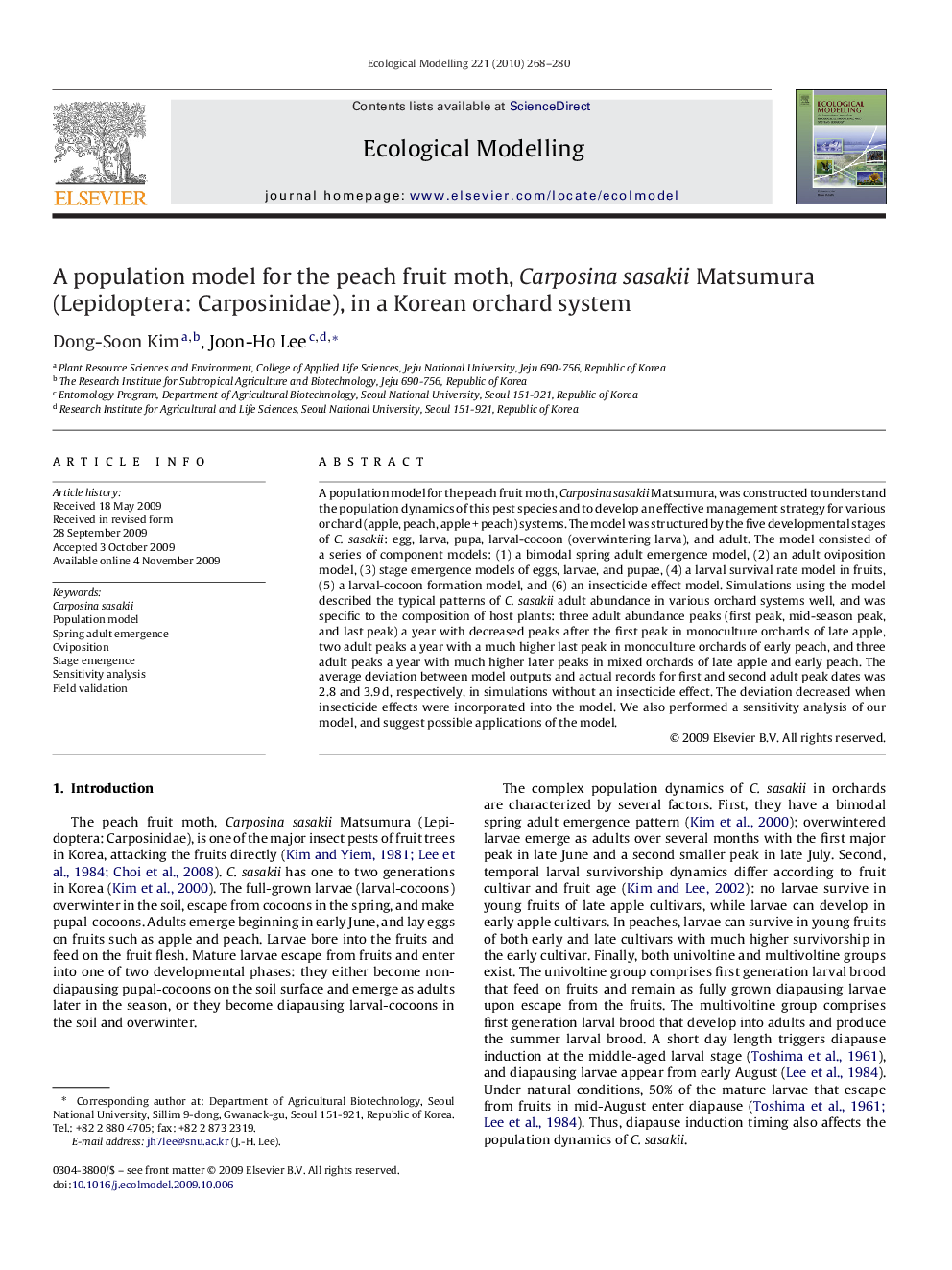| کد مقاله | کد نشریه | سال انتشار | مقاله انگلیسی | نسخه تمام متن |
|---|---|---|---|---|
| 4377490 | 1303431 | 2010 | 13 صفحه PDF | دانلود رایگان |

A population model for the peach fruit moth, Carposina sasakii Matsumura, was constructed to understand the population dynamics of this pest species and to develop an effective management strategy for various orchard (apple, peach, apple + peach) systems. The model was structured by the five developmental stages of C. sasakii: egg, larva, pupa, larval-cocoon (overwintering larva), and adult. The model consisted of a series of component models: (1) a bimodal spring adult emergence model, (2) an adult oviposition model, (3) stage emergence models of eggs, larvae, and pupae, (4) a larval survival rate model in fruits, (5) a larval-cocoon formation model, and (6) an insecticide effect model. Simulations using the model described the typical patterns of C. sasakii adult abundance in various orchard systems well, and was specific to the composition of host plants: three adult abundance peaks (first peak, mid-season peak, and last peak) a year with decreased peaks after the first peak in monoculture orchards of late apple, two adult peaks a year with a much higher last peak in monoculture orchards of early peach, and three adult peaks a year with much higher later peaks in mixed orchards of late apple and early peach. The average deviation between model outputs and actual records for first and second adult peak dates was 2.8 and 3.9 d, respectively, in simulations without an insecticide effect. The deviation decreased when insecticide effects were incorporated into the model. We also performed a sensitivity analysis of our model, and suggest possible applications of the model.
Journal: Ecological Modelling - Volume 221, Issue 2, 24 January 2010, Pages 268–280